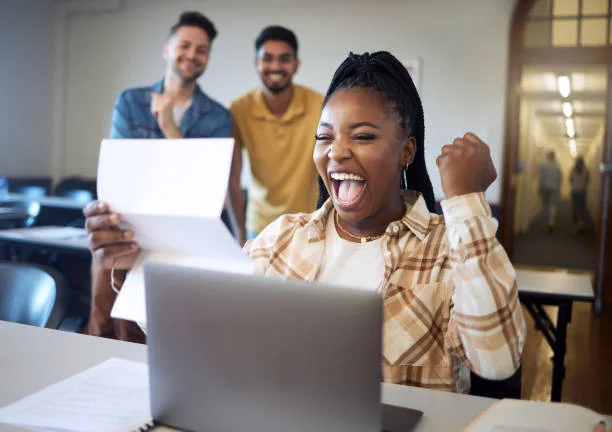Understanding learning styles by Dunn and Dunn can revolutionize how we approach education and enhance instructional methodology for individual learners in a supportive instructional environment, especially for the social learner. Unlike traditional methods that treat all students equally, this instructional methodology emphasizes individual preferences through style assessment and recognizes multiple learning styles, including the social learner. It acknowledges that learners have particular learning needs and learn differently based on sensory experiences, environmental factors, psychological influences, and personal interests within a comprehensive learning style model.
Understanding the Dunn and Dunn Model
Origin of the Model
The Dunn and Dunn learning style model, influenced by psychological influences, originated in the 1970s. Researchers Rita Dunn and Kenneth Dunn developed it to address diverse learning needs. They recognized that students have different learning styles and preferences for acquiring knowledge. This insight led them to create a framework that identifies various learning styles.
In 1975, Dunn and Dunn began researching how environmental, emotional, sociological, and physiological factors influence learning. Their work emphasized that effective teaching must consider these variables, including learning style. The model aimed to provide a structured approach to education that adapts to individual student needs and learning styles.
Collaboration with Education Authorities
Collaboration played a significant role in advancing the Dunn and Dunn learning style model. In the late 1970s, the New York State Department of Education partnered with Dunn and Dunn to explore learning styles. This partnership allowed for broader implementation of their findings on learning styles across schools and facilitated training for educators on recognizing and accommodating different learning styles.
The model gained credibility within educational circles through this collaboration and addressed various learning styles. Schools began to integrate its principles into curricula. Teachers learned to tailor their instructional methods based on student learning style preferences. This shift aimed to create more engaging learning environments.
Enhancing Student Learning
The primary aim of the Dunn and Dunn model is to enhance student learning. The model encourages educators to customize their teaching strategies, allowing them to meet better the unique needs of each learner’s learning style.
Key components of the model include identifying how students’ learning style affects how they learn best. Students may prefer visual aids, hands-on activities, or auditory instructions. Recognizing these preferences allows teachers to design lessons that resonate with their students.
Moreover, the model promotes an understanding of how environmental factors impact learning. Noise levels, lighting, and seating arrangements can affect student engagement. Adjusting these elements can improve focus and retention.
Teachers are encouraged to create flexible learning environments. This flexibility helps accommodate various learning styles within a single classroom setting. For instance, some students may thrive in group settings, while others perform better in solitude.
The Dunn and Dunn model provides a comprehensive framework for understanding learning styles. Its origins in the 1970s laid the groundwork for future educational practices. Collaboration with the New York State Department of Education helped legitimize its use in schools. Ultimately, the model’s goal is clear: enhance student learning through tailored instructional methods.
Critical Components of Learning Styles
Environmental Preferences
Environmental preferences include factors like noise levels, lighting, and seating arrangements. These elements can significantly affect how a learner engages with the material. For instance, some learners thrive in quiet settings, while others prefer background noise.
Understanding these differences helps educators create optimal learning environments. An excellent learner may need minimal distractions for focus, while a warm learner might benefit from collaborative spaces.
Emotional Preferences
Emotional preferences relate to a learner’s motivation and anxiety levels. Some individuals learn better in supportive atmospheres, while others may find it challenging to stay engaged.
Recognizing these emotional needs is crucial. Students with high anxiety might struggle in competitive settings. Tailoring teaching techniques to accommodate these emotions fosters better learning outcomes.
Sociological Preferences
Biological preferences address how learners interact with others. Some prefer solitary study, while others thrive in group settings. Understanding these preferences allows for effective grouping strategies during collaborative projects.
Teachers can utilize style assessments to identify students’ sociological needs. This approach ensures that each student receives the support they require, enhancing their learning experience.
Physiological Preferences
Physiological preferences involve individual physical conditions that affect learning. Factors such as movement, time of day, and even dietary needs play a role here. Some students may learn best through hands-on activities, while others prefer reading materials.
Educators must consider these physiological influences when designing lessons. Incorporating various teaching techniques can cater to diverse learners and improve engagement.
Psychological Influences
Psychological influences encompass cognitive styles and personal attitudes toward learning. Some students are visual learners who benefit from diagrams and charts. Others might be auditory learners who grasp concepts better through discussions.
Identifying these psychological influences is essential for effective instruction. Aligning teaching methods with students’ learning style models promotes a more profound understanding and retention of information.
Environmental Factors in Learning
Noise Levels
Environmental influences play a crucial role in shaping the learning experience. Noise levels can significantly impact student concentration. High noise levels often lead to distractions, disrupting focus and hindering information retention. Research suggests that quieter environments foster better learning outcomes. In contrast, excessive background noise can increase stress and reduce productivity.
Some students thrive in a bustling atmosphere, while others require silence to concentrate effectively. The ideal learning environment varies based on individual preferences. For instance, a classroom filled with chatter may energize some learners while overwhelming others.
Lighting Conditions
Lighting is another vital factor in the instructional environment. It affects mood, alertness, and overall engagement. Bright lights can stimulate activity but may also cause fatigue over time. Dim lighting can create a relaxing atmosphere but might lead to drowsiness.
Many educators consider natural light the perfect learning environment. Studies show that exposure to daylight improves performance and well-being. Classrooms with large windows often see increased student engagement and motivation.
Selecting appropriate lighting helps create an optimal setting for learning.
Temperature Control
Temperature influences comfort levels in learning spaces. A room that is too hot can lead to lethargy. Conversely, a cold environment can distract students from their work. Most people find a temperature range of 68-72°F to be ideal for focus and productivity.
Maintaining a comfortable climate supports better cognitive function. Students are more likely to engage when they feel physically at ease.
Seating Preferences
Seating arrangements significantly impact student focus. Some learners prefer traditional desks, while others benefit from collaborative seating, like group tables or bean bags. Flexible seating options promote movement and comfort, enhancing attention spans.
Students who control their seating choices often express higher satisfaction with their learning experience. This autonomy fosters a sense of responsibility and ownership over their education.
Background Noise or Music
Background noise or music can enhance concentration for some individuals. Soft instrumental music may help students block out distractions and improve focus. However, others may find music distracting and prefer silence.
The key lies in understanding personal preferences regarding environmental stimuli. For example, some learners might excel in a quiet library, while others perform best in a café-like setting with gentle background chatter.
Emotional Influences on Learning
Motivation
Motivation plays a crucial role in learning. It drives students to engage with the material. High motivation often leads to better academic performance. Students who are motivated tend to set goals and work towards them persistently.
Persistence is equally essential. It helps students overcome challenges. Those who persist in their efforts are more likely to succeed. They view obstacles as opportunities for growth. This mindset fosters resilience, which is vital in the learning process.
Willingness to Conform
A student’s willingness to conform can significantly affect learning outcomes. Some students embrace structured environments, finding comfort in clear guidelines and expectations. This conformity can enhance their focus and drive.
Others may resist these structures. They might prefer autonomy and self-directed learning, which can lead to frustration in traditional settings. Students who resist may struggle with authority figures or rigid curricula. Their emotional state can hinder their ability to absorb information.
Patience and Structure
Patience is essential for emotional readiness to learn. Students need time to process new information. Rushing through lessons can create anxiety, which makes an anxious student less likely to retain knowledge effectively.
The structure also plays a pivotal role in fostering patience. Clear frameworks help students understand what is expected of them. A well-structured environment reduces uncertainty and builds confidence. Students thrive when they know what steps to take next.
Teachers can support this by providing consistent routines. Routines help students feel secure and prepared for learning tasks. This security encourages a positive emotional response, making it easier for students to engage with the material.
Emotional Readiness
Emotional influences shape how students approach learning tasks. A supportive environment boosts emotional readiness. Positive reinforcement from teachers can enhance motivation. Recognition of effort fosters a sense of belonging.
Conversely, negative experiences can have lasting effects. Students who face criticism may develop a fear of failure, which can stifle creativity and curiosity. Educators must create a safe space for exploration.
Understanding these emotional influences is vital for effective teaching strategies. By recognizing the interplay between motivation, conformity, patience, and structure, educators can tailor their approaches and foster an environment that promotes academic success and emotional well-being.
Sociological Aspects of Learning
Social Learner
Specific learners thrive in social environments. They prefer to engage with peers rather than work alone. This preference highlights the sociological influences on learning. Interaction with others can enhance understanding and retention of information. Students who learn socially often benefit from discussing ideas and sharing perspectives.
Collaborative learning fosters a sense of community. It allows students to build relationships while learning. These connections can motivate learners to participate more actively. In contrast, some individuals may struggle in group settings. They might feel overwhelmed or distracted by peers. Understanding these dynamics is essential for educators.
Group Benefits
Learning in pairs or small groups offers several advantages. First, it encourages dialogue among students. This exchange of ideas can deepen comprehension of complex topics. Second, students can support each other’s learning journeys, clarify concepts, and provide feedback.
Research indicates that peer teaching is effective. When one student explains a topic to another, both reinforce their knowledge. This method enhances retention and understanding. Social interactions help develop critical thinking skills. Students learn to articulate their thoughts clearly.
Group work also promotes accountability. Learners are more likely to complete tasks when they know others depend on them, and this responsibility can lead to improved performance overall.
Social Dynamics
Dynamics play a crucial role in shaping learning experiences. Positive interactions can create a supportive environment. Students feel valued and respected, which boosts confidence. Conversely, negative dynamics can hinder progress. Conflicts or competition may arise in certain groups.
Economic background can influence how students interact in social settings. Those from diverse backgrounds may bring unique perspectives to discussions. Educators should recognize these differences and adapt their approaches accordingly.
Understanding the impact of social dynamics is vital for fostering inclusive education. Teachers must create environments where all learners feel comfortable participating. This inclusivity enhances the overall educational experience.
Physiological Needs in Education
Perceptual Preferences
Students have different perceptual preferences that influence their learning. Visual learners prefer diagrams and charts. They benefit from images and videos. Auditory learners grasp concepts better through listening. Discussions and lectures are practical for them. Kinesthetic learners thrive on hands-on activities. They learn best by doing, not just observing.
Understanding these preferences helps educators tailor their approaches. For instance, incorporating visual aids can enhance visual learners’ understanding. Similarly, providing opportunities for movement supports kinesthetic learners. This approach fosters a more inclusive learning environment.
Optimal Learning Times
Research shows that students have optimal learning times throughout the day. Many students perform better in the morning when fresh, while others may find their peak performance in the afternoon or evening. Recognizing these patterns is crucial for effective teaching.
Schools often operate on fixed schedules. This rigidity can hinder some students’ learning potential. Teachers can experiment with flexible scheduling to accommodate different rhythms. Educators can improve engagement and retention by aligning lessons with students’ optimal times.
Movement in Learning
Movement plays a vital role in the learning process. Students often feel restless when confined to desks for long periods. Incorporating movement breaks can rejuvenate focus and energy levels. Simple activities like stretching or walking can make a significant difference.
Hands-on activities also cater to kinesthetic learners’ needs. Science experiments or group projects engage students physically and mentally. These experiences create lasting memories and a deeper understanding of concepts.
Research highlights the benefits of active learning strategies. Studies show that students who participate in physical activities show improved concentration and retention rates. Movement enhances blood flow to the brain, promoting cognitive function.
Incorporating these elements into educational practices addresses physiological influences on learning styles. It acknowledges that each student has unique needs that must be met for effective education.
Psychological Preferences in Study
Analytical Thinking
Psychological preferences play a crucial role in how individuals approach learning. Analytical thinkers break down information into parts, analyze details, and critically assess data. This style often leads to strong problem-solving skills. For example, students who prefer analytical thinking may excel in subjects like mathematics or science.
Conversely, global thinkers view concepts holistically. They focus on the overall picture instead of specific details. This can enhance creativity and innovation. Global thinkers might thrive in subjects such as literature or art. Understanding these differences helps educators tailor their teaching methods.
Cognitive Processing Styles
Cognitive processing styles significantly influence educational success. Students with different cognitive styles process information uniquely. Some may prefer visual aids, while others benefit from auditory learning methods.
Research indicates that matching teaching strategies to a student’s cognitive style improves retention and understanding. For instance, a student who learns best through visuals may struggle with solely lecture-based instruction. Implementing varied instructional methods can cater to diverse cognitive preferences.
Learning Preferences
Learning preferences guide personalized study strategies for students. These preferences include social influences, such as collaborative or independent study environments. Some students thrive in group settings, benefiting from peer discussions and teamwork.
Others prefer solitary study time, where they can focus without distractions. Recognizing these preferences enables educators to create effective learning environments. Tailored approaches can lead to higher engagement and motivation among students.
Social Preferences
Individual preferences also shape how individuals learn best. Students with social-solid needs often seek interaction during their studies. They gain insights from sharing ideas with peers and teachers.
On the other hand, those with less emphasis on social interaction may find group work challenging. They might prefer self-paced learning opportunities that allow for deeper concentration. Acknowledging these differences is essential for fostering an inclusive educational atmosphere.
Need for Personalization
The need for personalized education is evident in today’s diverse classrooms. Each student brings unique psychological influences to the learning process, and educators must recognize these differences to effectively support individual growth.
Incorporating assessments that identify psychological preferences can guide instructional design. This approach ensures that all students receive the support they need to succeed academically.
Applying the Model in Education
Assessing Learning Styles
Teachers can assess students’ learning styles through various methods. Surveys and questionnaires offer insights into individual preferences. Educators can use tools like the Dunn and Dunn Learning Style Inventory. This inventory helps identify whether students prefer visual, auditory, or kinesthetic learning.
Classroom observations also play a crucial role. Teachers notice how students engage with materials and activities. They can determine which environments help students thrive. Regular feedback from students aids in better understanding their needs.
Adapting Curriculum
Adapting curriculum requires flexibility and creativity. Teachers should incorporate different instructional methodologies to cater to various styles. For example, multimedia resources benefit visual learners, while discussions support auditory learners.
Group projects allow kinesthetic learners to engage physically with content. Offering choices in assignments empowers students to work in ways that suit them best. A differentiated approach ensures all students find success.
Benefits of the Model
Implementing the Dunn and Dunn model significantly enhances student engagement. Students who learn in their preferred style often show increased motivation and participate more actively in classroom discussions and activities.
This model also improves academic outcomes. Research indicates that when instruction aligns with learning styles, retention rates increase. Students grasp concepts more thoroughly when they connect with the material personally.
Moreover, teachers gain valuable insights into their practices. Based on student responses and performance data, they can refine their teaching strategies. This ongoing assessment leads to continuous improvement in instructional quality.
Incorporating this model fosters a positive classroom environment. Students feel valued when their unique learning preferences are acknowledged. This recognition promotes self-esteem and encourages a love for learning.
Creating Tailored Learning Experiences
Importance of Individualized Instruction
Individualized instruction is vital in education. Each student has unique learning needs. Dunn and Dunn’s model emphasizes adapting teaching experiences to meet these needs. This approach fosters engagement and motivation. Students respond better when lessons align with their learning styles. For example, visual learners benefit from diagrams, while auditory learners excel through discussions. Recognizing these differences can lead to more effective teaching strategies.
Research shows that personalized learning enhances retention and comprehension. When students feel understood, they are more likely to participate actively. This active involvement leads to a deeper understanding of the material.
Role of Technology
Technology plays a crucial role in facilitating personalized learning. Digital tools allow educators to create customized learning activities, and online platforms provide resources tailored to various learning styles. For instance, interactive simulations cater to kinesthetic learners, while video content supports visual learners.
Adaptive learning software adjusts to individual progress. These programs analyze performance and modify content accordingly. Such technology helps teachers identify areas where students struggle. This data-driven approach allows for timely interventions.
Technology enables access to diverse educational resources. Students can explore topics at their own pace and choose formats that resonate with them, such as articles or podcasts. This flexibility promotes self-directed learning.
Improved Academic Performance
Tailored educational approaches have the potential to improve academic performance. Studies indicate that students receiving individualized instruction achieve higher test scores and demonstrate tremendous enthusiasm for learning.
By addressing specific strengths and weaknesses, educators can help students build confidence. This confidence translates into a willingness to tackle challenging subjects. For example, a student struggling with math may thrive when lessons are adapted to include real-world applications.
Incorporating feedback loops further enhances this process. Regular assessments inform both students and teachers about progress. This feedback allows adjustments to be made quickly, ensuring continued growth.
Teachers play a critical role in this personalized journey. They must remain flexible and responsive to their students’ changing needs. Professional development opportunities can equip educators with the skills to implement these tailored experiences effectively.
Creating tailored learning experiences leads to better engagement and understanding among individual learners. It highlights the importance of recognizing diversity in learning styles and adapting instructional methods accordingly.
Final Remarks
The Dunn and Dunn model offers a comprehensive framework for understanding diverse learning styles. By recognizing the key components—environmental, emotional, sociological, physiological, and psychological—you can create more effective educational experiences tailored to individual needs. This approach enhances learning outcomes and fosters a supportive environment where every learner can thrive.
Now is the time to implement these insights in your educational strategies. Embrace the diversity of learning styles and adapt your methods accordingly. Your commitment to personalized education can significantly impact student engagement and success. Start today by assessing your current practices and exploring new ways to cater to varied learning preferences.
Frequently Asked Questions
What is the Dunn and Dunn learning styles model?
The Dunn and Dunn model identifies various learning styles based on individual preferences. It emphasizes that students learn best when their unique needs are met, encompassing environmental, emotional, sociological, physiological, and psychological factors.
How can I identify my learning style?
To identify your learning style, reflect on how you prefer to receive information. Consider your environment, social interactions, and emotional responses during learning. Observing patterns in your preferences can help clarify your unique style.
Why are environmental factors important in learning?
Environmental factors such as lighting, noise levels, and seating arrangements significantly impact concentration and retention. A comfortable and tailored learning environment enhances engagement and improves overall learning outcomes.
How do emotional influences affect learning?
Emotions play a crucial role in the learning process. Positive emotions can enhance motivation and retention, while negative feelings may hinder focus. Understanding these influences can help create a supportive educational atmosphere.
What are the sociological aspects of learning?
Biological aspects refer to how social interactions influence learning. Some learners thrive in collaborative settings, while others prefer solitary study. Recognizing these preferences allows educators to design effective group dynamics for diverse learners.
How can I apply the Dunn and Dunn model in education?
To apply the Dunn and Dunn model, individual students’ preferences across different components must be assessed. Tailor instructional methods and materials to meet their needs, fostering a more engaging and practical learning experience.
What are tailored learning experiences?
Tailored learning experiences are customized educational approaches designed to meet individual student needs. Educators can enhance engagement, understanding, and overall academic success by considering each learner’s unique style and preferences.






